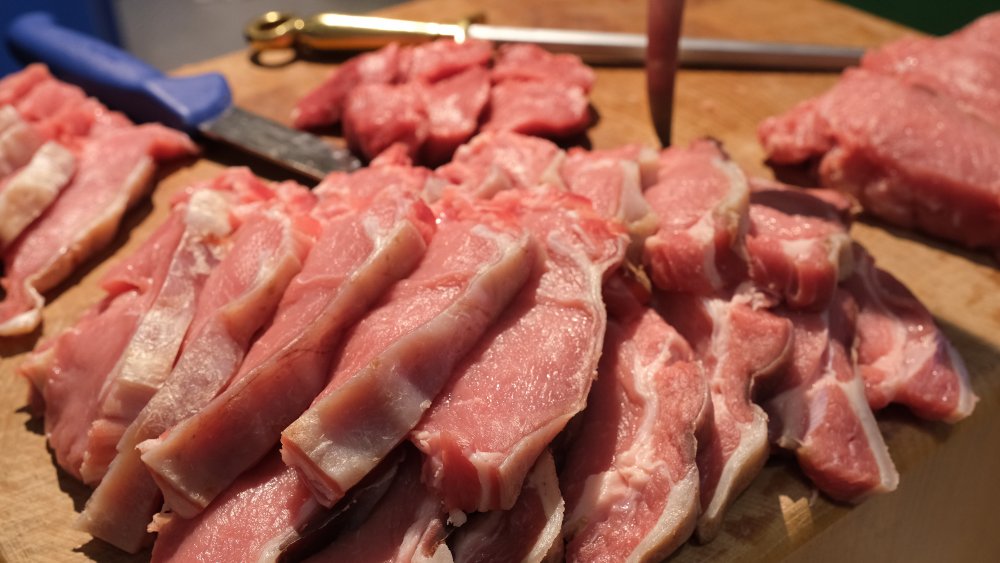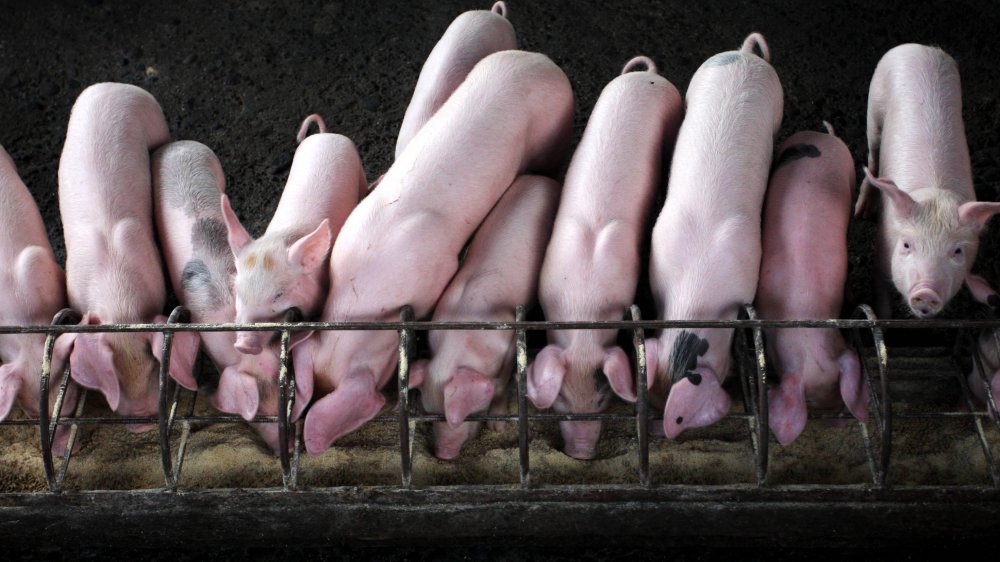The Scary Reason Pork Used To Be So Dangerous To Eat
You would be hard-pressed to think of something more dastardly to inflict on a meat eater than trichinosis. This condition, also called trichinellosis, is caused by a parasite that once was commonly associated with eating uncooked or undercooked pork but is now more likely to come from eating uncooked or undercooked wild game (via the CDC). A roundworm called Trichinella lives and breeds in the intestines of humans and other meat eaters, according to the CDC. When Trichinella larvae are ready to leave the small-intestine nest, they enter our bloodstream and eventually lodge in our muscles, curl up into little balls, and wait for the next host.
While all this is going on, we experience abdominal pain, diarrhea, vomiting, and fever — for starters, according to the CDC. After the young Trichinella get into our muscles, then body aches, itching, and swelling of the face and eyes can set in. Symptoms can last for months, and in extreme cases can cause heart problems, lack of coordination, and death — all from eating undercooked pork or wild game.
Fortunately, the disease is quite rare. Your chance of getting trichinosis in a given year is one in 10 million, according to a 2015 CDC study.
Pork should be cooked to 145 degrees to prevent trichinosis
The CDC received an average 16 reports of trichinosis from 2011 to 2015 (via the CDC). The previously mentioned 2015 CDC study looked at 84 trichinosis cases over a five-year period. Forty-one of them came from bear meat, and just 10 were linked to commercial pork.
Pork does come with some health risks if not handled or cooked properly, same as beef and poultry. The federal Food Safety and Inspection Service website lists five different types of bacteria, including E. coli, that are found in all three types of meat and can make you sick if the germs aren't killed during cooking. FSIS recommends cooking pork to 145 degrees, using a food thermometer to check the temperature. Let the meat sit for three minutes after cooking, to be even more sure the meat is done. Ground-pork patties should be cooked to 160 degrees, according to FSIS, but if any trichinella larvae happen to be in your pork, 145 degrees will kill them. Like we said, however, that's become a lot less likely over the decades. In the middle of the 20th century, a new law greatly reduced trichinella infestations in pigs by banning raw meats in pig feed. With pigs eating healthier, pork lovers can, too.

